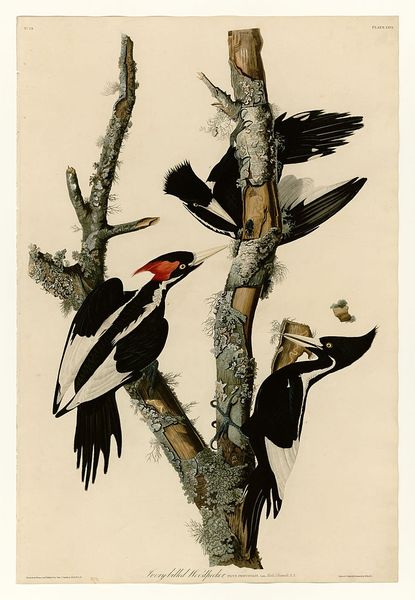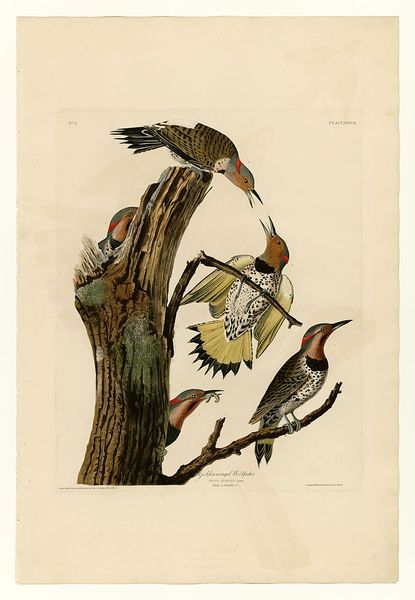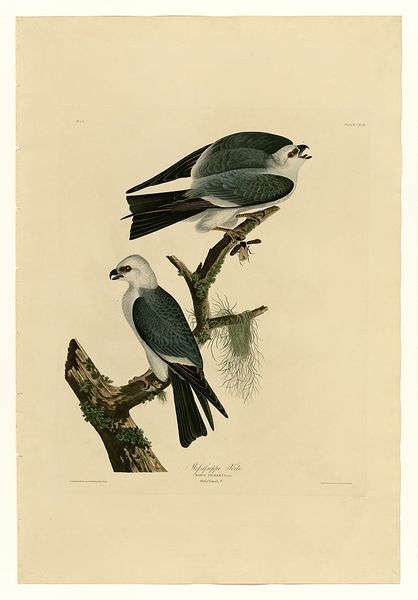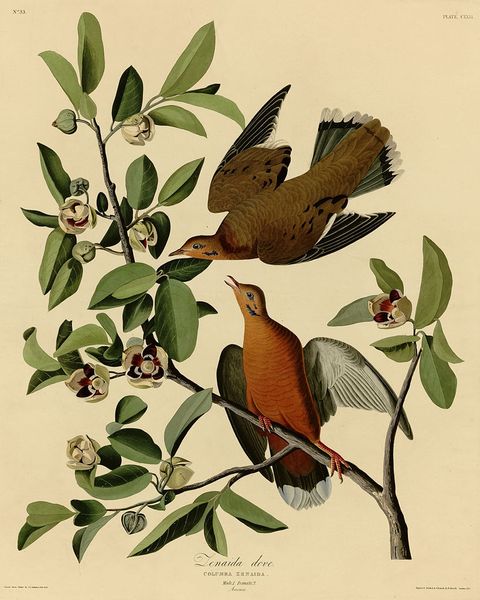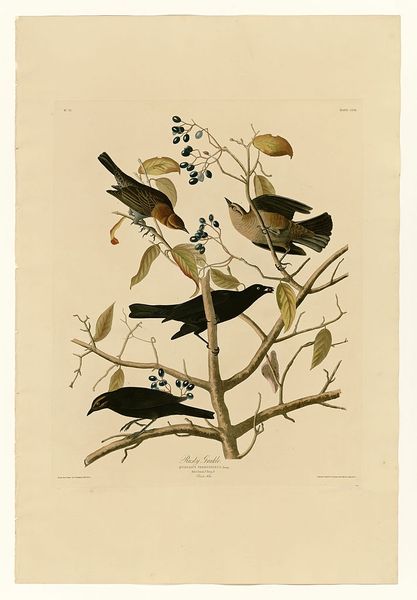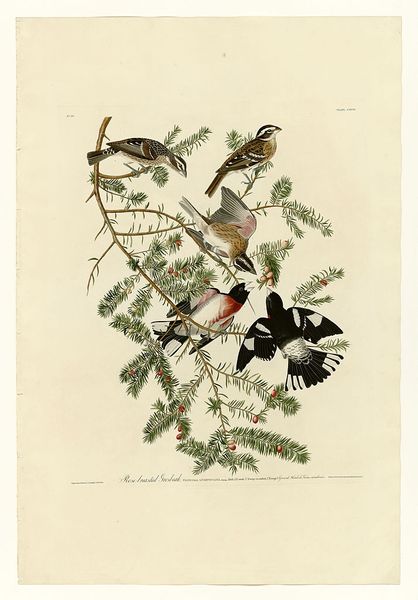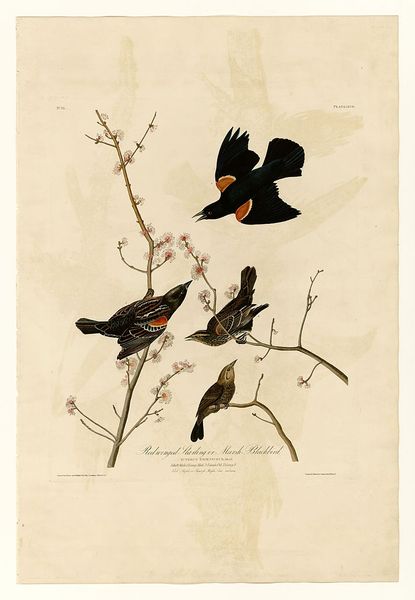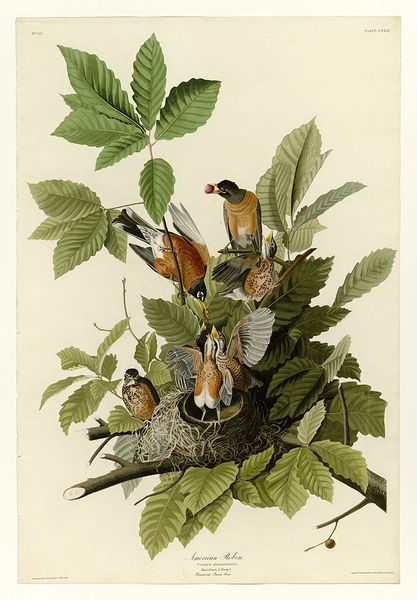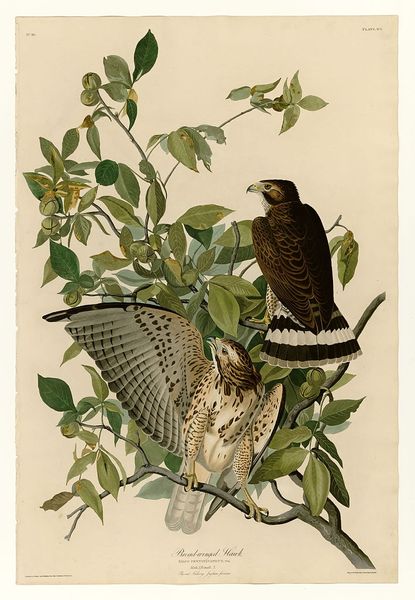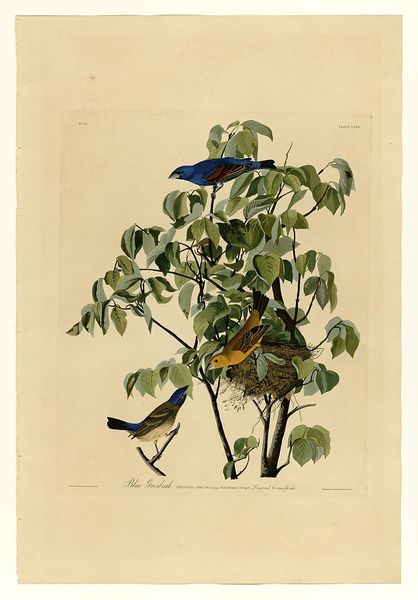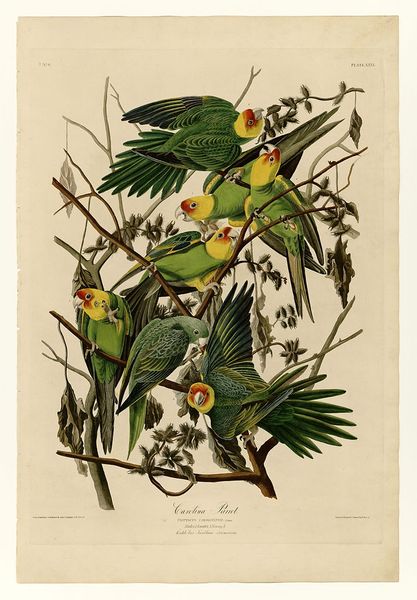
drawing, painting, print, paper, watercolor
#
portrait
#
african-art
#
drawing
#
painting
# print
#
landscape
#
bird
#
figuration
#
paper
#
watercolor
#
plant
#
romanticism
#
naive art
#
watercolour illustration
#
botany
#
naturalism
#
realism
Copyright: Public domain
Editor: So, here we have John James Audubon's "Plate 111 Pileated Woodpecker", a watercolor, drawing, and print on paper. I'm really struck by the texture he creates – it feels very tactile. How do you interpret this work? Curator: What stands out to me is Audubon’s use of readily available materials to create these images. Consider the paper itself, likely made from cotton rags—a discarded resource transformed into a surface for art. The watercolors, too, would have been concocted from ground pigments, often minerals sourced locally. Editor: So, it’s about thinking beyond just the image and looking at how the art itself was produced? Curator: Precisely! It makes you think about the labor involved – not only Audubon's hand, but the entire network required to produce paper, pigments, and ultimately, the print. Also, consider the context: Audubon's project relied on the exploitation of natural resources for profit. Did this impact the accuracy of these studies, even inadvertently? Editor: That's a darker side to it that I hadn't considered. He was dependent on the materials he could harvest for economic gain. Curator: Exactly! His project mirrors the societal norms of extraction. Furthermore, consider how the print itself was intended for a consumer market – to be bought, displayed, possessed. This contrasts with indigenous knowledge systems where this creature held ecological importance. Editor: This has completely shifted how I see the piece. The focus on material conditions and labor adds such depth. Curator: Right? It makes us consider what the 'true' cost of art really is. Editor: Absolutely, I'm leaving with so much more to think about. Thanks!
Comments
No comments
Be the first to comment and join the conversation on the ultimate creative platform.
